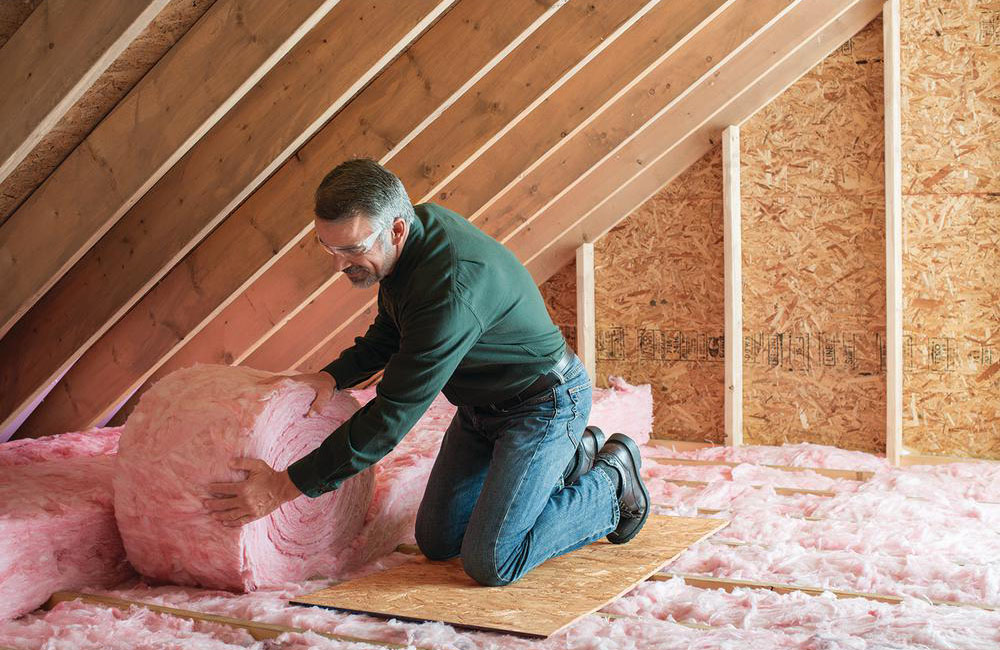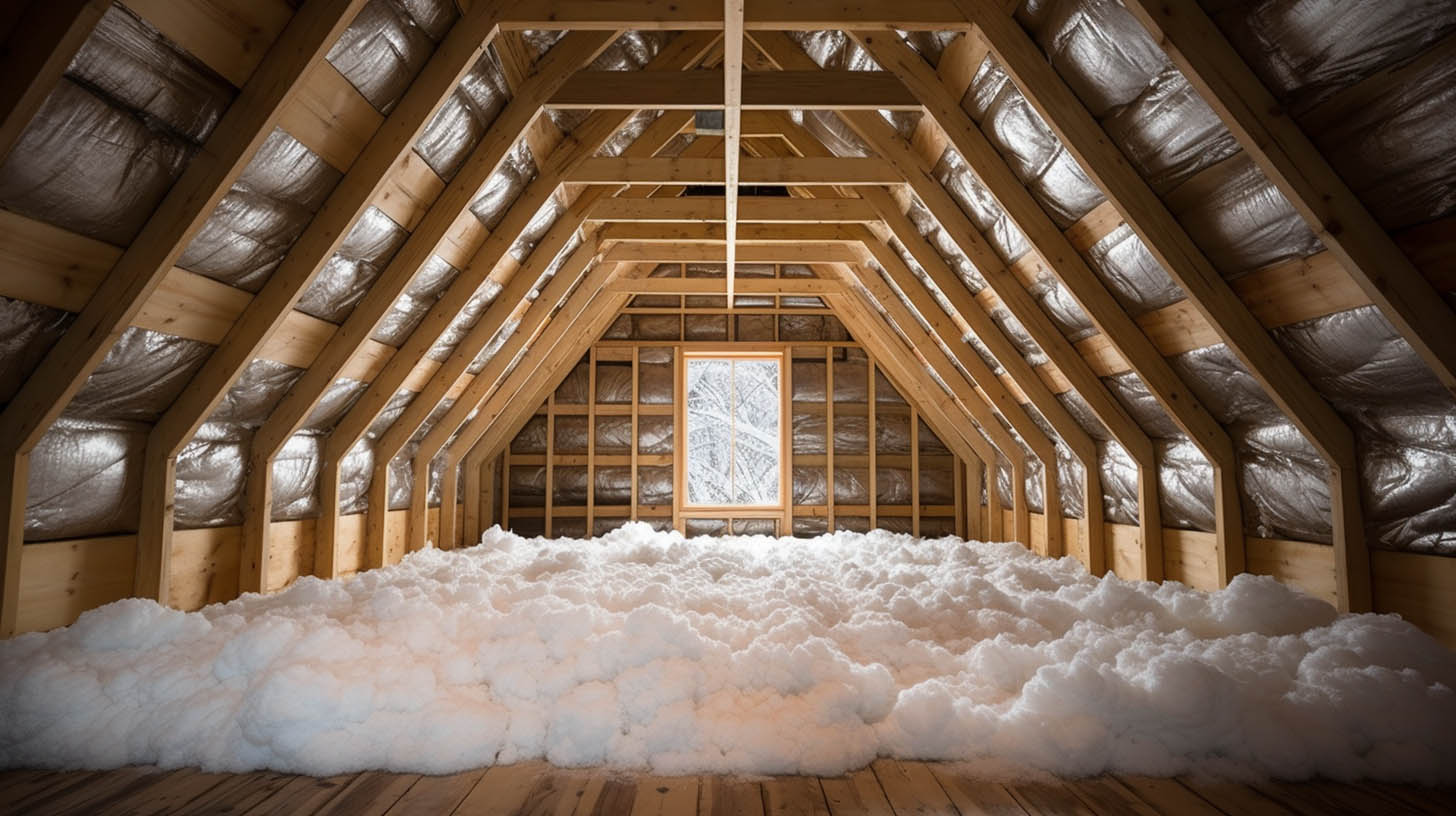Discover the Different Types of Attic Insulation and Their Distinct Advantages for Your Home's Energy Efficiency

Fiberglass Insulation
Fiberglass insulation is one of the most typically made use of products for attic room insulation as a result of its excellent thermal performance and cost-effectiveness. Composed of tiny glass fibers, this material successfully catches air, creating a protecting obstacle that helps keep consistent interior temperatures. Its high R-value per inch makes it specifically efficient at withstanding warmth transfer, which is essential for power preservation in homes.
Setup of fiberglass insulation is reasonably straightforward, often available in batts or loose-fill kinds, suiting different attic room setups. Furthermore, it is non-combustible and immune to moisture, reducing the danger of mold and mildew growth. This resilience adds to its durability, making fiberglass a viable long-term investment for home owners.
Moreover, fiberglass insulation is typically produced from recycled products, which improves its eco-friendliness. The material can likewise add to soundproofing, reducing noise transfer between rooms. While it is important to use safety equipment during installment to prevent irritability from the fibers, the total advantages of fiberglass insulation, consisting of power financial savings and ecological considerations, make it a prominent selection for enhancing attic room performance and advertising a comfy living atmosphere.
Spray Foam Insulation
Spray foam insulation is an extremely effective option for attic insulation, understood for its remarkable air sealing and thermal performance. This cutting-edge insulation product is composed of a mix of isocyanate and polyol material, which, when combined, expands swiftly to load spaces and tooth cavities in the attic room. Its capacity to stick to numerous surface areas ensures a continuous obstacle versus air leakages, dramatically reducing heat loss throughout chillier months and warmth gain throughout warmer periods.
One of the key advantages of spray foam insulation is its high R-value per inch, which suggests it provides excellent thermal resistance in a relatively thin application. This is specifically helpful in attics where space is commonly limited. Additionally, spray foam can help minimize wetness accumulation, reducing the risk of mold and mildew and mildew development, which can be detrimental to both the framework and indoor air top quality.
While the preliminary cost of spray foam insulation might be more than conventional alternatives, its lasting power cost savings, coupled with raised convenience and enhanced home worth, make it a beneficial financial investment for house owners seeking improved power effectiveness. Attic Insulation DFW. On the whole, spray foam insulation sticks out as an effective remedy for optimizing attic room insulation
Cellulose Insulation

Cellulose insulation is a preferred selection for attic room insulation, mainly composed of recycled paper products treated with fire retardants. This ecologically friendly option is understood for its superb thermal performance, properly decreasing heat transfer in both summer season and cold weather. The dense make-up of cellulose permits it to fill gaps and spaces in attic room rooms, providing a smooth barrier versus air leakages.
Among the considerable benefits of cellulose insulation is its ability to resist mold and insects, owing to the fire retardant treatments made use of throughout manufacturing. In addition, it flaunts a high R-value per inch, which translates right into exceptional energy efficiency. Home owners can anticipate lower cooling and heating prices as an outcome of boosted insulation.
Installation is typically achieved via blowing loose cellulose into the wanted location, allowing for a effective and fast procedure. This method also minimizes disturbance to the existing structure. Furthermore, cellulose insulation has a relatively low ecological influence, as its manufacturing process uses recycled products, adding to sustainable structure techniques.
Rock Wool Insulation
Among the numerous choices for attic room insulation, rock wool, likewise referred to as mineral woollen, stands out due to its outstanding thermal and acoustic performance. Made from recycled or all-natural products, rock woollen is developed by thawing rock and rotating it into fibers, causing a product that uses superb insulation residential properties.
Among the substantial benefits of rock woollen insulation is its high R-value, which shows its effectiveness in withstanding warm flow. This particular not only improves energy performance but additionally contributes to preserving a comfortable indoor temperature year-round. Additionally, rock wool is inherently fireproof, making it a more secure alternative for homes as it can endure heats without melting or releasing poisonous fumes.
Additionally, rock woollen insulation stands out in soundproofing abilities, properly minimizing sound transmission between spaces and from outside sources. In general, rock woollen insulation gives a thorough service for boosting power efficiency, security, and convenience in residential settings.
Glowing Barrier Insulation
Radiant obstacle insulation acts as a reliable option for lessening warm transfer in attic rooms, specifically in warmer environments. This kind of insulation jobs by reflecting convected heat away from living areas, therefore reducing the amount of heat that gets in a home throughout heat - Attic Insulation DFW. Normally made up of a highly reflective product, such as light weight aluminum foil, glowing obstacles are installed in attic rooms, dealing with the roofing system, where they can obstruct see page inbound warmth from the sun
The primary advantage of glowing obstacle insulation is its capacity to dig this reduced air conditioning costs. By reflecting heat instead of absorbing it, radiant barriers can help preserve a more secure interior temperature, decreasing the workload on a/c systems. This effectiveness translates right into reduced power costs and enhanced comfort for homeowners.
Along with energy cost savings, glowing barriers can additionally add to boosted interior air high quality. By minimizing warm buildup, they aid decrease moisture levels, which can prevent mold development and improve overall air circulation. When mounted appropriately, glowing barrier insulation can be an invaluable enhancement to any kind of energy-efficient home, making it a worthwhile factor to consider for homeowners looking to enhance their attic insulation method.
Verdict
In conclusion, recognizing the different types of attic room insulation-- fiberglass, spray foam, cellulose, rock woollen, and radiant barriers-- enables homeowners to make enlightened decisions pertaining to energy effectiveness. By choosing the ideal insulation product, substantial reductions in power prices can be attained, along with enhancements in interior convenience.

In conclusion, understanding the numerous kinds of attic insulation-- fiberglass, spray foam, cellulose, rock wool, and glowing obstacles-- allows house owners to make informed choices pertaining to power efficiency.